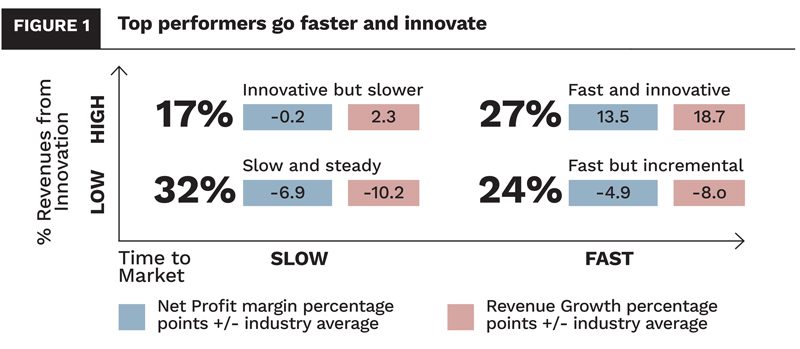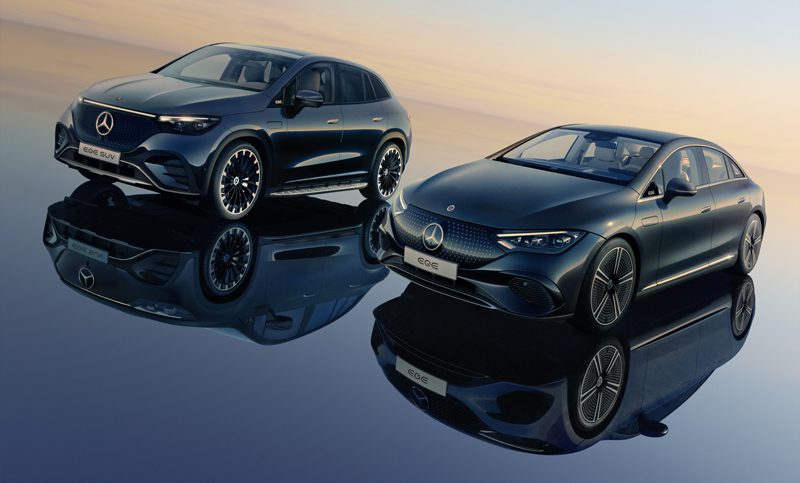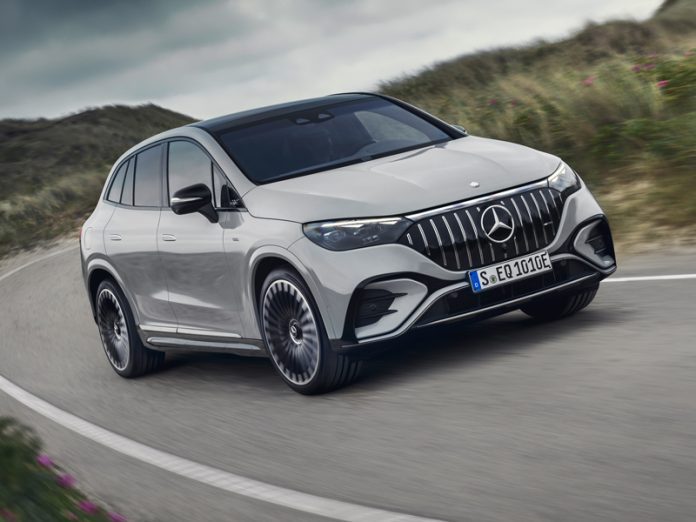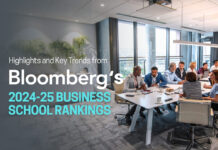By Peter Weill, Jan Brecht and Stephanie L. Woerner
To stay relevant and achieve resilience, company leaders need to focus not only on speed but also innovation. In this article, the authors discuss how the right combination of these two parameters will make your company a top performer.
In the many workshops that the MIT Center for Information Systems Research (CISR) conducts with senior executive teams globally, we often hear senior leaders say “If only we could go faster.” So we decided to research what happens if a company goes faster, and the answer was surprising: speed alone doesn’t differentiate performance much. In our research, companies that were top performing in both growth and margin relative to their industries not only went faster to market but also innovated more effectively.
In this paper, we identify four drivers of the combination of speed and innovation and discuss how it contributes to top performance. We describe how companies achieve this combination with a mix of enabling technologies and management mechanisms. Finally, we illustrate this approach with a case study of Mercedes-Benz demonstrating how they achieve resilience via combining speed and innovation.
The Need for More Than Speed
To better understand the impact of speed on performance and what it takes to get there, we surveyed 721 companies at the end of 2022. We asked a series of questions regarding speed and innovation and the technologies (for example, APIs and automation) and management mechanisms (such as management-style dashboards and data access) that companies used. We adjusted for industry differences and ran a series of regressions and other statistical analyses to create a management framework illustrating how top performers operate.

The management framework divides companies into two dimensions: innovation and time to market. We measured innovation based on the percentage of companies’ revenues from new products and services introduced in the last three years; respondents self-assessed speed, based on time to market, relative to competitors. We found that companies in our survey fell into four quadrants, which we named somewhat provocatively: Slow and Steady (32% of companies), Innovative but Slower (17%), Fast but Incremental (24%), and Fast and Innovative (27%). The Fast and Innovative companies performed much better with 9.8 and 11.6 percentage points higher on net profit margin and revenue growth respectively, compared to industry averages. The worst-performing companies were the Slow and Steady group, with 4.8 and 8.2 percentage points of growth and margin respectively, below their industry averages.
Surprisingly, the Fast but Incremental companies performed only marginally better than their Slow and Steady counterparts. And the Innovative but Slower companies performed significantly better than the Slow and Steady companies, with performance around the industry average on both growth and margin suggesting not only that speed is not enough but that innovation is typically more important.
The Drivers of Being Fast and Innovative

To better understand what enables a company’s pursuit of both innovation and speed, we looked at the enabling technologies and management mechanisms used most effectively by the companies in each quadrant in our framework. Statistically, we found four drivers of top performance:
In a digital world, no company can thrive on its own. Companies that are above average on innovation and speed collaborate more effectively, contributing to growth; and they are very effective at creating value from ecosystems and getting above-average revenues from channel partners. To keep innovation flowing, they provide suppliers with access to real-time data. They perceive a greater threat from digitisation, which drives them to innovate faster and focused on creating more value with digital for and from their customers.
Additionally, these companies have simplified work and organisation to succeed, shifting their management orientation from the more traditional command and control to coach and communicate. They understand there is no longer time to pass decisions up and down the hierarchy and instead empower local teams to make decisions within guard rails, with accountability supported by shared dashboards. The dashboards articulate value creation goals, identify the current levels of capabilities to achieve them, and measure if they are achieving them – for all to see so that when needed, people can make course corrections.
High Performance at Mercedes-Benz

Mercedes-Benz is a premier luxury car brand with a heritage of employing leading-edge technology. Mercedes-Benz’s strategy is focused on building dedicated electric vehicles, developing leading in-car software, and adhering to the highest standards of operational excellence. Following this approach, in 2022, Mercedes-Benz Group AG increased its earnings before interest and taxes by twenty-eight percent year-over-year and showcased the technical feasibility of a 745-mile-range electric vehicle with the company’s Vision EQXX car that relied on a less than 100kwh battery. Mercedes-Benz aims to be the leader in luxury mobility and to achieve this along with some of the most ambitious sustainability goals in the industry. The top management team is focused on the four drivers identified in this research—but with a Mercedes-Benz flavour.
Leadership while Simplifying Work
Leadership around technology at Mercedes-Benz is focused on creating digital mastery and entrepreneurial accountability to deliver on both speed and innovation. For all of its digital roles, Mercedes-Benz has established specific training paths to help people excel and continuously improve on their way to achieving expert status. As becoming a digital company requires more than employing experts, Mercedes-Benz has built communities of practice throughout the entire company, including for the production teams, to ensure digital fitness. The company accomplished this by moving to a coach-and-communicate leadership approach, which was especially necessary as the communities of practice are not reflected in the formal organisational structures.
Providing clear direction on what should be done is good—but explaining the why of doing things that way is better because it creates entrepreneurial accountability. At Mercedes-Benz, people are encouraged to think beyond the boundaries of their own responsibilities to care about and contribute to the overall result. Mercedes-Benz is in the process of introducing a product orientation for everything in the digital space. Going forward, work will be focused not only on project input parameters such as timelines and resources but also on the outcomes of the digital products, with the product owner fully accountable and empowered. This new orientation has thus far enabled Mercedes-Benz to implement a full-fledged online commerce suite for more than forty markets in less than one year—an innovation that is driving revenue. The company set the ambition for its online commerce suite of “five clicks to buy, three clicks to finance,” which requires that the suite is backed by a significantly streamlined business model.
Leading-Edge Technology

Everyone talks about cloud technologies, and yet they are often referring to a narrow application of cloud focused on hyper-scale infrastructure. Mercedes-Benz, by comparison, employs cloud native as a technical ecosystem to develop and run software.
To achieve advanced software capabilities, Mercedes-Benz relies on modular applications rather than monolithic, inflexible systems to allow for more flexibility and maintainability. The company also uses highly automated tools for the delivery of new code to facilitate continuous deployment. To additionally enable speed and innovation via enhanced software capabilities requires on-demand infrastructure, which provides computing power that can scale as required; and reliability, by leveraging scaling to create redundancy so that faulty components do not become a single point of failure.
In a cloud-native environment, one team is in charge of development and operations (DevOps), producing an end-to-end understanding and accountability. This is the driver for simplifying and automating business processes—which in turn drives speed and innovation. Mercedes-Benz’s cloud-native approach to digital shop floor management enables a high level of resilience in production, even with an increasing number of disruptions in global supply chains. Every impact is displayed in real-time dashboards, supporting a zero-delay production programme. During the worldwide bottlenecks of certain semiconductors, these capabilities enabled Mercedes-Benz to optimise its production within a very short time, focusing on high-margin vehicles and thus protecting profits.
The Mercedes-Benz Operating System (MB.OS) allows for frequent updates to the in-car software, both for control units and entertainment features. All updates go through one cloud-native vehicle backend, which not only verifies the technical viability and release conformity of the update but also ensures compliance with different certification requirements in different countries. In addition, the cloud-native vehicle backend gathers data from vehicles in the field, allowing for feature or quality improvements. Under GDPR governance and provided that the customer has given consent, vehicle data can also be used to directly enrich the customer experience through additional digital services.
Data as the Guide

Mercedes-Benz uses data in various ways, including to make better decisions based on comprehensive data—targeting the development of predictive action (for instance, predicting maintenance needs for capital-intensive shop floor equipment) and the creation of improved customer services through knowing customers better—while observing all relevant data protection principles. For example, having customer data available at every touchpoint, whether physical or digital, allows Mercedes-Benz to make a “next best offer”—an action identified using predictive analytics—which contributes to revenue growth. Mercedes-Benz can use data from a customer’s interactions with the company and the telemetry of their vehicle to predict and notify about the car’s maintenance needs. For example, if you are a sporty driver, they can contact you at a less-than-standard interval to visit a Mercedes-Benz repair shop to change your tyres or brake pads. Mercedes-Benz’s customers decide for themselves which services they want to use and which data to pass on to the company and not.
Also, Mercedes-Benz is establishing a comprehensive digital representation (a digital twin) of vehicles throughout their entire life cycle, starting with the order of the vehicle and extending from production through recycling of the used vehicle. The target is to radically speed up the time to market, reduce costs in development and operations, and further enhance the customer experience. For example, when developing a quick or even predictive reaction to potential issues on the road, the digital twin can help Mercedes-Benz go faster and innovate. Mercedes-Benz’s ambition is that the first physical vehicle built will be the one used for certification.
An Innovation Ecosystem
Mercedes-Benz has created an ecosystem around its customers. The company combines the data from sources such as online and offline touchpoints and car usage to not only make the next best offer but also to interact with customers more often, in particular through the Mercedes me connect app or other digital services based on MB.OS. These interactions create even more data that help in many ways including a first-class charging-and-driving experience. By aggregating all available vehicle data like state of charge and energy consumption, including environmental information such as wind speed, a whole new level of individual range prediction can be achieved. Additionally, Mercedes-Benz has partnered with a number of other companies, such as hotels, to create special offers for Mercedes-Benz customers. Customers can rely on the fact that data protection is of great importance to Mercedes-Benz and that the company ensures a responsible and transparent handling of data.
What It Takes to Succeed

We found that in today’s digital world, top performers are both faster to market and innovating to generate new revenue. We suggest you have a conversation about where your company is today and where you’d like to be on our 2×2 framework. Being excellent at both enabling technologies like APIs and management mechanisms like value-tracking dashboards was common in the top-performing companies in our research. Digital enablement of both speed and innovation is a great opportunity for you to reinvent how your company does business—to become the company you have always wanted it to be.
This article is based on “Going Faster Is Not Enough; Add Innovation To Outperform,” MIT CISR Research Briefing, April 2023 by Peter Weill, Jan Brecht and Stephanie L. Woerner.
About the Authors
 Peter Weill, PhD, is an MIT Senior Research Scientist and Chairman of the Center for Information Systems Research (CISR) at the MIT Sloan School of Management, which studies and works with companies on how to transform for success in the digital era. MIT CISR has approximately 75 company members globally who use, debate, support and participate in the research. Peter’s work centres on the role, value, and governance of digitisation in enterprises and their ecosystems and has coauthored 10 books. Ziff Davis recognised Peter as #24 of “The Top 100 Most Influential People in IT” and the highest-ranked academic.
Peter Weill, PhD, is an MIT Senior Research Scientist and Chairman of the Center for Information Systems Research (CISR) at the MIT Sloan School of Management, which studies and works with companies on how to transform for success in the digital era. MIT CISR has approximately 75 company members globally who use, debate, support and participate in the research. Peter’s work centres on the role, value, and governance of digitisation in enterprises and their ecosystems and has coauthored 10 books. Ziff Davis recognised Peter as #24 of “The Top 100 Most Influential People in IT” and the highest-ranked academic.
 Jan Brecht presently serves as the CIO of Mercedes-Benz Group AG and Mercedes-Benz AG, overseeing global IT operations across divisions, brands, and markets. Prior, he held roles at Adidas Group, culminating in CIO and Head of Global Supply Chain. Beginning at Daimler-Benz AG in 1997, he’s led various IT roles, including management positions in automotive sales, financial services, production, and engineering. Brecht holds a Master’s in Communications Technology and is associated with the German National Scholarship Foundation. Outside work, he’s a family man who enjoys hiking, skiing, and 20th-century novels.
Jan Brecht presently serves as the CIO of Mercedes-Benz Group AG and Mercedes-Benz AG, overseeing global IT operations across divisions, brands, and markets. Prior, he held roles at Adidas Group, culminating in CIO and Head of Global Supply Chain. Beginning at Daimler-Benz AG in 1997, he’s led various IT roles, including management positions in automotive sales, financial services, production, and engineering. Brecht holds a Master’s in Communications Technology and is associated with the German National Scholarship Foundation. Outside work, he’s a family man who enjoys hiking, skiing, and 20th-century novels.
 Stephanie L. Woerner, PhD, is a Principal Research Scientist at the MIT Sloan School of Management and Director of MIT CISR. She is a renowned researcher and speaker, and coauthor of Future Ready: The Four Pathways to Capturing Digital Value and What’s Your Digital Business Model? Six Questions to Help You Build the Next-Generation Enterprise, both published by Harvard Business Review Press. Stephanie studies how companies use technology and data to create more effective business models as well as how they manage the associated organisational change and governance and strategy implications. Stephanie’s research has appeared in MIT Sloan Management Review, Harvard Business Review, CNBC, Forbes, Chief Executive, and CIO.
Stephanie L. Woerner, PhD, is a Principal Research Scientist at the MIT Sloan School of Management and Director of MIT CISR. She is a renowned researcher and speaker, and coauthor of Future Ready: The Four Pathways to Capturing Digital Value and What’s Your Digital Business Model? Six Questions to Help You Build the Next-Generation Enterprise, both published by Harvard Business Review Press. Stephanie studies how companies use technology and data to create more effective business models as well as how they manage the associated organisational change and governance and strategy implications. Stephanie’s research has appeared in MIT Sloan Management Review, Harvard Business Review, CNBC, Forbes, Chief Executive, and CIO.




































